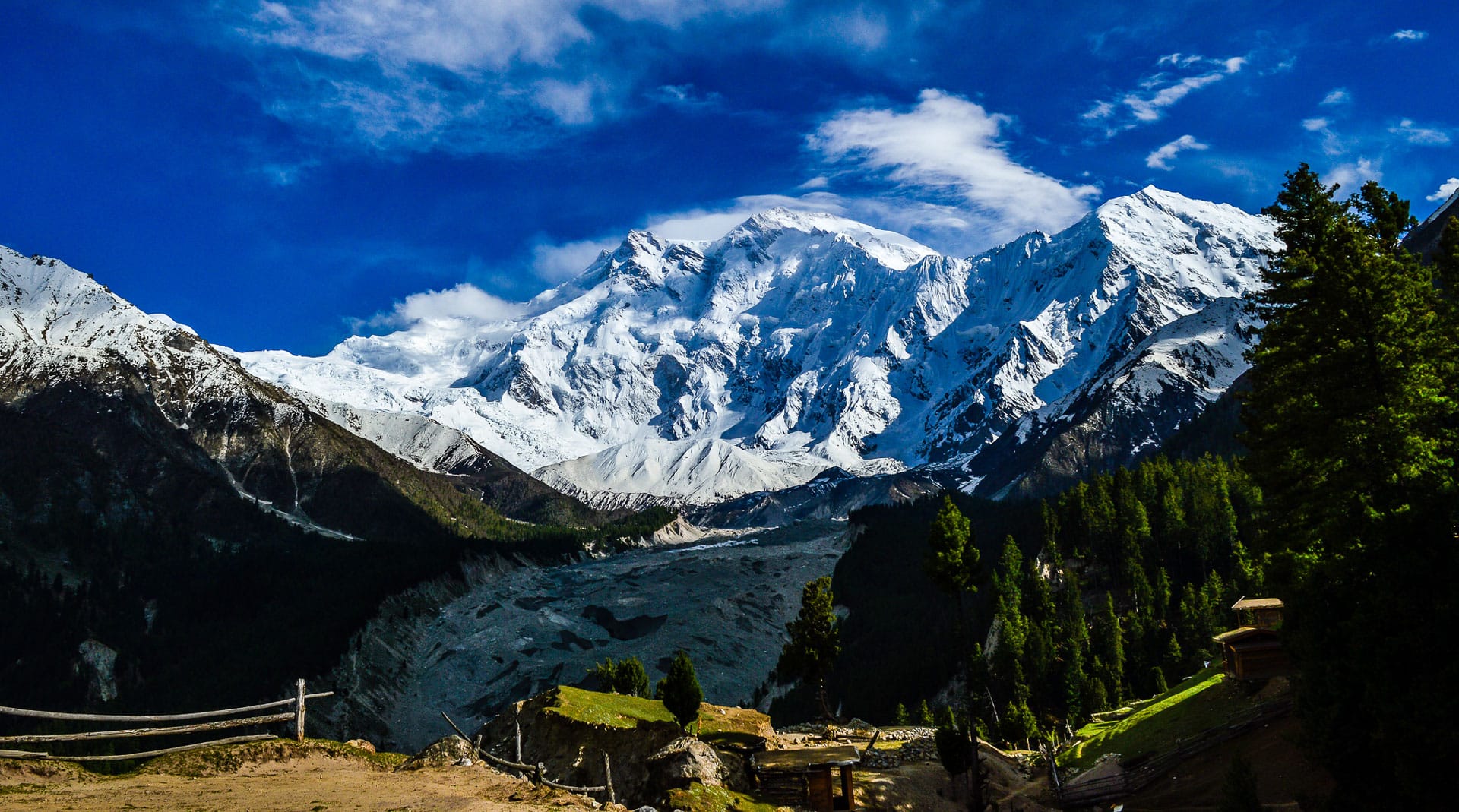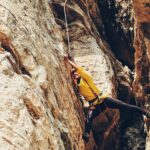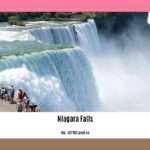Unveiling the Allure of the Killer Mountain
Nanga Parbat Diamir, often referred to as the “Killer Mountain,” is an imposing giant of rock and ice, reaching over 8,000 meters into the sky. Located in Pakistan, this majestic peak captivates adventurers with its western face, the Diamir Face, drawing climbers from around the world who seek the thrill of conquering its treacherous slopes.
This formidable face is a tapestry of steep slopes that seem to disappear into the clouds, hidden crevasses waiting to test the courage of even the most seasoned climber, and the ever-present threat of avalanches and serac falls. Nanga Parbat Diamir commands respect, demanding caution and expertise from those daring to make the ascent.
But amidst the danger lies an undeniable allure. Climbers who have faced this giant speak of an adrenaline rush, a profound feeling of being dwarfed by nature’s raw power, and the unbreakable bonds forged with fellow climbers who share the challenge.
Nanga Parbat Diamir’s history is etched in ice and stone, a testament to human resilience and the fragility of life. From the legendary Albert F. Mummery, who bravely challenged the mountain in 1895, to the tragic events of 2013, the mountain holds stories of triumph and tragedy.
The Diamir region itself is a world of breathtaking beauty. The Diamir Trek, a journey not for the faint of heart, offers a glimpse into this world of towering peaks and sparkling glaciers. Along the trails, trekkers encounter a rich tapestry of flora and fauna and witness the traditions of local communities.
Nanga Parbat Diamir is a powerful reminder that even amidst immense challenges, the human spirit seeks exploration, connection, and the desire to conquer the unconquerable.
Why Nanga Parbat is Called the Killer Mountain: Unpacking the Deadly Truth
Nanga Parbat, also known as the “Naked Mountain,” carries a chilling nickname: “Killer Mountain.” This moniker is a stark reflection of its brutal climbing history and high fatality rate. While other eight-thousanders present formidable challenges, Nanga Parbat’s unique combination of treacherous weather, unpredictable avalanches, and exposed routes makes it a particularly dangerous endeavor, even for the most seasoned mountaineers.
The Grim Statistics
While exact figures may vary, Nanga Parbat has a significantly higher fatality rate compared to other mountains of its stature. For example, as of 2009, there had been 322 successful summits and 68 recorded deaths. The mountain’s early attempts were often marked by tragedy, further solidifying its reputation. The 1934 German expedition, for instance, resulted in numerous fatalities, etching a tragic chapter in the mountain’s history.
More than Just Numbers
The nickname “Killer Mountain” isn’t solely about the number of lives lost. It speaks to the mountain’s inherent dangers and unforgiving nature. The extreme vertical relief, most notably the Rupal Face on its southern side, is the highest mountain face in the world, creating extreme technical challenges and increasing objective hazards.
Unpredictable and rapid weather changes are common in the Himalayas, but Nanga Parbat is notorious for sudden storms and extreme cold that can trap climbers. The mountain’s structure and weather patterns also create a breeding ground for avalanches, posing a constant threat.
Adding to the difficulties, Nanga Parbat is notoriously remote, making rescue operations extremely difficult. The extreme altitude intensifies the risk of altitude sickness and its potentially deadly complications.
Despite its deadly reputation, Nanga Parbat continues to draw climbers from around the world who are captivated by its beauty and the challenge it presents. The allure of conquering one of the world’s deadliest peaks continues to inspire climbers, even with the knowledge of the risks.
Analyzing Nanga Parbat’s Climbing Difficulty
Nanga Parbat: Where Majesty Meets Menace. This phrase encapsulates the essence of the mountain—its breathtaking beauty juxtaposed with its deadly reputation. The “Killer Mountain” is more than just a challenging climb; its legacy is written in both triumph and tragedy. To understand why Nanga Parbat is considered one of the most difficult and dangerous 8,000-meter peaks, one must look beyond the death zone and examine the technical challenges that contribute to its notorious reputation.
A Mountain of Extremes
Imagine standing before the Rupal Face, the world’s highest mountain face, a sheer wall of rock and ice towering 4,600 meters. This imposing feature is just one of the many technical challenges that await climbers on Nanga Parbat.
- Constant Rockfall: The slopes are incredibly unstable, with the constant threat of rockfall.
- Avalanche Prone: The combination of steep slopes and heavy snowfall creates a perfect recipe for avalanches.
- Unpredictable Weather: The Himalayas are known for their rapid changes in weather, and Nanga Parbat is no exception. Sudden storms and extreme cold are constant threats.
- High Altitude Challenges: As climbers ascend, they encounter the challenges of the death zone—oxygen deprivation, extreme cold, and the ever-present risk of altitude sickness.
A History Marked by Tragedy
The “Killer Mountain” earned its nickname honestly. The early 20th century saw numerous failed expeditions and a high number of climber deaths. One of the most notable tragedies, the 2013 Nanga Parbat massacre, serves as a chilling reminder of the risks associated with this peak.
Even the words of renowned climber Albert Mummery, after encountering the Rupal Face, speak to the mountain’s formidable nature: “The astounding difficulties of the southern face may be realized by the fact that the gigantic rock-ridges…”
Who Dares to Climb?
Nanga Parbat is not for the faint of heart—or the inexperienced climber. It demands:
- Elite Climbers Only: Only those with extensive high-altitude climbing experience should attempt this peak.
- Required Experience: Technical ice and rock climbing skills are essential, as is a high level of physical fitness.
- Mental Fortitude: Perhaps the most crucial element is the mental strength to cope with extreme conditions, risk, and fear.
Choosing a Route
Several routes ascend Nanga Parbat, each with its own challenges:
- Diamir Face (West Face): The “normal route” is considered the safest, though still incredibly challenging. The Kinshofer Route is a popular choice.
- Rupal Face (South Face): This route is extremely difficult and dangerous due to its sheer size and technical demands.
- Other Routes: Less-climbed routes exist, all presenting their own set of difficulties.
Nanga Parbat is a mountain that demands respect. It is a testament to both the power of nature and the human desire to push beyond perceived limits.
Nanga Parbat: Unveiling the Location of the “Killer Mountain”
Nanga Parbat, the “Killer Mountain,” reigns supreme in Pakistan’s Gilgit-Baltistan region, piercing the sky as the westernmost sentinel of the Himalayas. This soaring peak, reaching a height of 8,126 meters, is the ninth highest in the world and a global mountaineering icon, attracting adventurers and igniting geopolitical discussions.
Where Legends Rise
Nanga Parbat stands tall in the Diamer District of the Gilgit-Baltistan region of Pakistan. Its coordinates are 35.2396° N, 74.6070° E, firmly placing it within Pakistan’s borders.
The Gilgit-Baltistan region, including Nanga Parbat, is internationally recognized as part of Pakistan’s administration. While there is an ongoing territorial dispute between India and Pakistan regarding the broader Kashmir region, it’s important to clarify that this does not directly impact the status of Nanga Parbat.
Multiple authoritative sources, including maps, geographical surveys, and international organizations, consistently place Nanga Parbat within Pakistan’s borders.
Names that Speak Volumes
“Nanga Parbat” is derived from Sanskrit, meaning “Naked Mountain,” a fitting description of its imposing, bare slopes. Locally, it is known as “Diamer,” meaning “King of the Mountains” in the Shina language, reflecting the reverence it inspires.
A Mountain of Significance
Nanga Parbat’s location in Pakistan carries cultural and historical weight, intricately woven into the region’s identity. It’s more than just a geographical landmark; it’s a symbol of the region’s challenging beauty and a source of pride.
The mountain’s reputation as the “Killer Mountain” speaks to its challenging climbing conditions and the inherent risks associated with mountaineering. However, it also attracts tourism, bringing economic benefits to the region.
Nanga Parbat stands as a testament to the enduring power of nature and the spirit of adventure that drives climbers to its slopes. It is a mountain of legends, a place where human ambition encounters the raw beauty and unforgiving nature of the Himalayas.
For great tasting cooking recipes, discover how to use naan flour and impress your family with your culinary skills. Searching for the right ingredients for your baking needs? Check out Nabisco graham crackers and try out different flavors and varieties.
- Unveiling Bernhard Caesar Einstein’s Scientific Achievements: A Legacy in Engineering - July 15, 2025
- Uncover who is Jerry McSorley: CEO, Family Man, Business Success Story - July 15, 2025
- Discover Bernhard Caesar Einstein’s Scientific Contributions: Unveiling a Legacy Beyond Einstein - July 15, 2025















